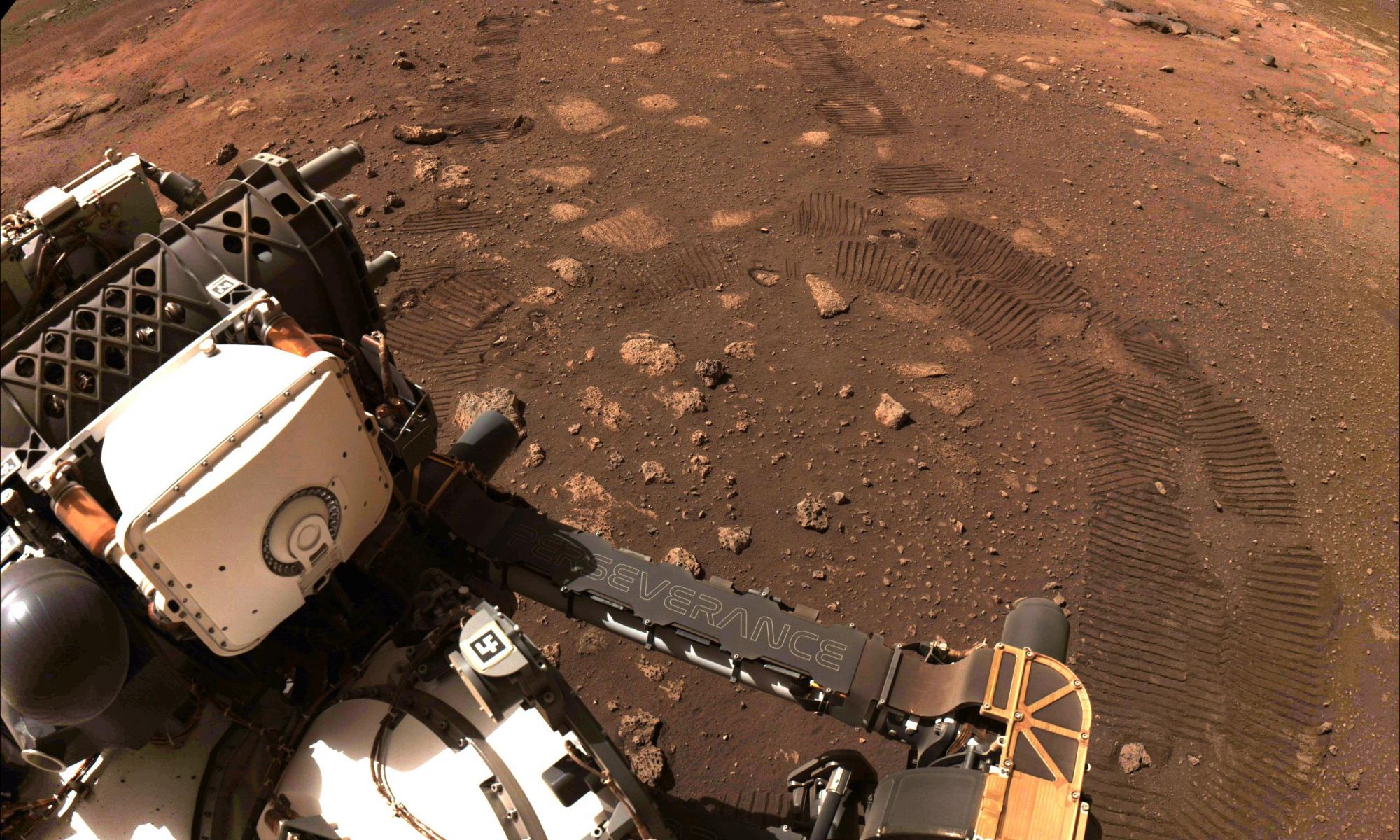On February 18th, 2021, NASA’s Perseverance rover landed in the Jezero Crater on Mars. Over the next two years of its primary mission, this robotic mission will carry on in the search for past life on Mars, obtaining soil and rock drill samples that will be returned to Earth someday for analysis. And as of March 4th, the rover conducted its first drive, covering 6.5 meters (21.3 feet) across the Martian landscape.
The drive lasted about 33 minutes and saw the rover move forward 4 meters (13 feet), turn in place 150 to the left, and then back up 2.5 meters (8 feet) into its new temporary parking position. The drive was part of a mobility test designed to check out and calibrate every system, subsystem, and instrument on Perseverance and marks an essential milestone in the deployment of the rover.
Once it commences science operations in the Jezero Crater, the rover will be making regular commutes of 200 meters (656 feet) or more at a time. In addition to the rover’s mobility system, the mission controllers also used this initial checkout period to update Perseverance’s software, replacing the program that helped the rover land with one that will allow it to investigate the planet.
This took place on the eighth Martian day since Perseverance arrived on Mars (Sol 8, or Feb. 26th). As Anais Zarifian, the Perseverance team’s testbed engineer at NASA’s Jet Propulsion Laboratory, said in a recent NASA press statement:
“When it comes to wheeled vehicles on other planets, there are few first-time events that measure up in significance to that of the first drive. This was our first chance to ‘kick the tires’ and take Perseverance out for a spin. The rover’s six-wheel drive responded superbly. We are now confident our drive system is good to go, capable of taking us wherever the science leads us over the next two years.”
Since then, the mission controllers performed checks on Perseverance’s Radar Imager for Mars’ Subsurface Experiment (RIMFAX) and Mars Oxygen In-Situ Resource Utilization Experiment (MOXIE). These instruments will allow Perseverance to explore geologic features beneath the surface with ground-penetrating radar (where liquid water may still exist) and to convert atmospheric carbon dioxide into oxygen gas.
The team also deployed the two wind sensors that are part of the rover’s Mars Environmental Dynamics Analyzer (MEDA), which will measure wind speed, direction, temperature, and humidity, and also measure dust particles (size and concentrations) in the Martian atmosphere. On March 2nd (Sol 12), engineers deployed the rover’s 2-meter (7-foot) long for the first time and flexed each of its five joints.
As Robert Hogg, Mars 2020 Perseverance rover deputy mission manager, stated:
“Tuesday’s first test of the robotic arm was a big moment for us. That’s the main tool the science team will use to do close-up examination of the geologic features of Jezero Crater, and then we’ll drill and sample the ones they find the most interesting. When we got confirmation of the robotic arm flexing its muscles, including images of it working beautifully after its long trip to Mars – well, it made my day.”
Throughout the process, the rover is cataloging its progress by taking thousands of images using the most advanced suite of cameras ever sent to Mars. These include images taken by Perseverance’s Navigation and Hazard Avoidance Cameras of the spot where the rover touched down. By studying how the retrorockets dispersed dust during the landing, the mission team hopes to better understand the dynamics of landing on the Red Planet.
All told, Perseverance has 23 cameras, a mix of engineering (9), science (7), and Entry, Descent, and Landing cameras (7). These have taken about 7,000 images since the mission began descending to the surface, all of which have been sent back to Earth via the Deep Space Network (DSN). This has been further assisted by the number of robotic missions currently in orbit around the Red Planet.
As Justin Maki, the chief engineer for imaging and the imaging scientist for the Mars 2020 Perseverance rover mission at JPL, said:
“Orbiter support for downlink of data has been a real gamechanger. When you see a beautiful image from Jezero, consider that it took a whole team of Martians to get it to you. Every picture from Perseverance is relayed by either the European Space Agency’s Trace Gas Orbiter, or NASA’s MAVEN, Mars Odyssey, or Mars Reconnaissance Orbiter. They are important partners in our explorations and our discoveries.”
In the near future, more checks and evaluations will be taking place, which includes more testing and calibration of the science instruments, taking longer test drives, and jettisoning the covers that kept the rover’s Sample Caching System and the Ingenuity Mars Helicopter shielded during landing. Ingenuity will also be making an experimental test flight in the near future to test its systems and capabilities.
The Perseverance mission is the latest in a long line of missions dedicated to revealing secrets from Mars’ past. These include the presence of water on its surface, a thicker (and warmer) atmosphere, the characterization of its past climate, and the possible existence of life. As part of this commitment to astrobiology, Perseverance will be the first mission to collect and cache samples of Martian rock and regolith.
A subsequent NASA-ESA mission – which will consist of a lander, rover, and launch vehicle – will be sent to retrieve these samples and bring them back to Earth for analysis. Last, but not least, Perseverance will pave the way for human exploration of the Red Planet. These missions are expected to take place sometime in the 2030s and will be the first crewed mission beyond the Earth-Moon system in history!
Further Reading: NASA

